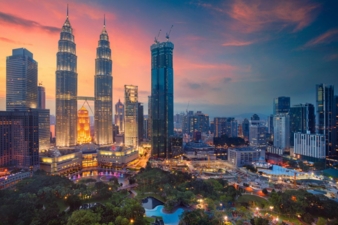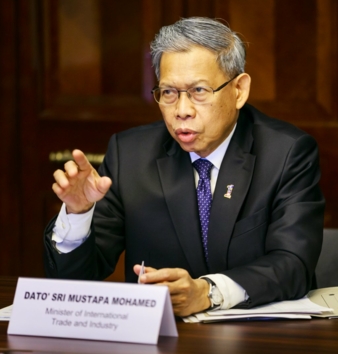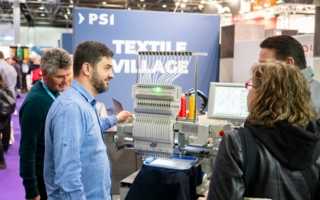09/10/2017 — auf Deutsch lesen
RCEP is only the next best option
When US President Donald Trump withdrew the USA from the Transpacific Partnership (TPP) earlier this year, the remaining eleven members of this stalling community were left reeling. Several months later, they now seem to be turning their attention to the Regional Cooperation Economic Partnership (RCEP) which is being touted by China as a serious alternative to the TPP. In terms of quality, environmental protection, copyright etc., the RCEP operates on a considerably lower level than the once US-led TPP. In conversation with textile network, Malaysia’s Minister of International Trade and Industry, Mustapa Mohammed, stated: "We’re in no rush to bury the TPP. The RCEP could, however, be the next best option."
Although the American withdrawal from the TPP deeply alarmed the remaining eleven members, some still believe that the partnership may be resurrected in the future. Mustapa points out that the great appeal of the TPP for Malaysia was the opportunity to gain access to the lucrative US market. This is why the RCEP can merely be seen as the second best option, capable of only partially replacing the TPP. He underlined the importance of the US as a trading partner, continuing: “The USA is Malaysia’s third biggest trade partner" with bilateral trade in 2016 amounting to almost US$ 50bn.
US investment in Malaysia
In 2016, Malaysia attracted MYR 95 bn (MYR = Malaysian Ringgits) in US investment, equating to US$ 22bn or almost EUR 19bn. The TPP countries account for around 40 percent of global trade. The demand for textiles within the context of both the TPP and the RCEP would be huge; this is certainly what the Chinese are bargaining for, even though some member states are unwilling to buy Chinese products. The Minister somewhat reassuringly pointed out that the RCEP agreement would contain a mechanism preventing the export of state-subsidised products (dumping) to the markets of all signatories. “The RCEP would also stimulate Chinese investment in Malaysia,” the Minister states. Malaysia is also a member of the ASEAN community, offering German and other companies a highly developed infrastructure as well as good connections to other ASEAN members.
Malaysia – supplier of technical textiles
In view of the fierce competition from countries such as Vietnam, Cambodia and Bangladesh, Malaysia’s textiles industry is increasingly focusing on quality and innovation. Malaysian manufacturers are concentrating, among others, on creating their own brands. One of strengths of the country’s textile business lies in technical textiles. Trade buyers travelling from Malaysia to this year’s Techtextil/Texprocess in Frankfurt strongly believe that Malaysian-made technical textiles have the potential to evolve into best-selling products on the global market. Malaysian products, they say, are on a par with goods from Taiwan, South Korea, Japan, Hong Kong and Turkey.
In conversation with textile network, S. Siva, Director of the Frankfurt office of MIDA, Malaysia’s investment development authority, stated: "Malaysia has made huge progress in the application of high-tech in the textile industry." Siva referred in this context to Malaysian companies specialising in technology for the production of technical textiles and nonwovens, as well as enterprises such as Apparel Alliance Sdn., based in Bhd in Kluang, Johor, which offers IT and automation solutions for the apparel industry and exhibited at Techtextil/Texprocess 2017. Jordan Tang, Director of Apparel Alliance, said: "3-D digitalisation is in great demand. The efficiency this brings leads to faster delivery times; research and development are contributing to further advances in digitalisation.” In this context, he emphasised that digitalisation cannot, however, replace the labour-intensive aspects of clothing production. Technical textiles are a “silver lining” for the global textile trade and one of Malaysia’s great strengths. The industry has set its sights on expanding this sector, which experts say can only be achieved in conjunction with innovation and a good marketing strategy. Siva: “We’d like to attract companies to Malaysia that have technological strengths in the field of technical and high-performance textiles. The German company, Naue GmbH & Co., for example, has set up a production facility in Malaysia specialising in geotextiles, geosynthetic clay liners and similar.”
Statistics from the Malaysian investment authority show that, in the period from 2012 to 2015, the country’s textile industry attracted MYR 1.64bn (US$1 = MYR 4.30) in investment from all over the world. At the same time, global textile exports from Malaysia rose in the period to MYR 580m.





